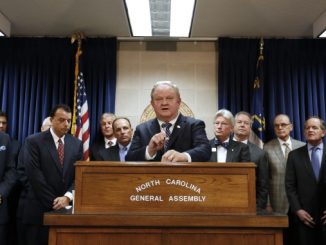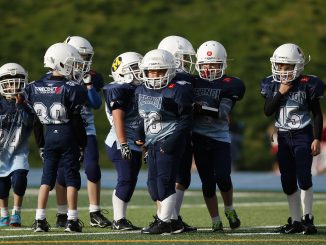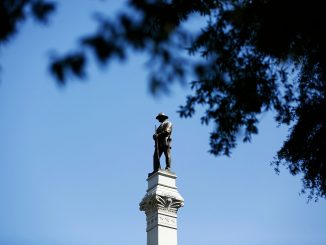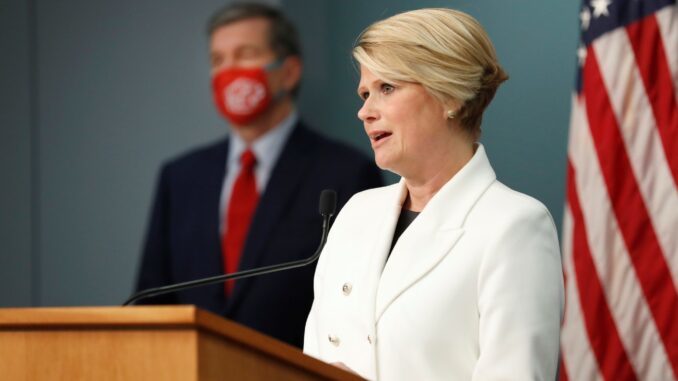
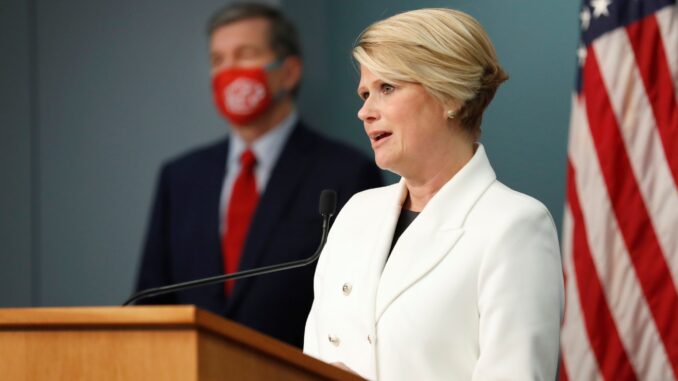
RALEIGH — A report that says nearly 23% of public school students and just over 9% of public charter schools students are at-risk for academic failure this school year is headed to lawmakers.
The report was presented by State Supt. Catherine Truitt at a Senate Education/Higher Committee hearing. The news comes on the heels of a failed veto override of Senate Bill 37, which seeks to return K-12 students to five-day-a-week in-person instruction.
While discussing the report, Truitt said the data shows a “lost year of learning” and she also advocated for all students to return to the classroom, calling Plan B worse than a “slight” risk COVID-19 poses under Plan A. In her remarks, she also said schools should consider moving from six-feet social distancing to 3-feet.
The five-page report includes several notes prior to the presentation of the data. One note cautions against extrapolating from the data.
“NCDPI cautions extrapolation of this data because definitions of at-risk students are locally determined to ensure effective interventions are in place and students’ needs are best met,” the report reads.
According to the report notes, the data is a bit of a mixed bag. The report says some public and charter schools “chose to share data aligned with the number of students who may not be promoted to the next grade-level” but other schools chose to report students “who were currently at-risk but may be promoted to the next grade-level.”
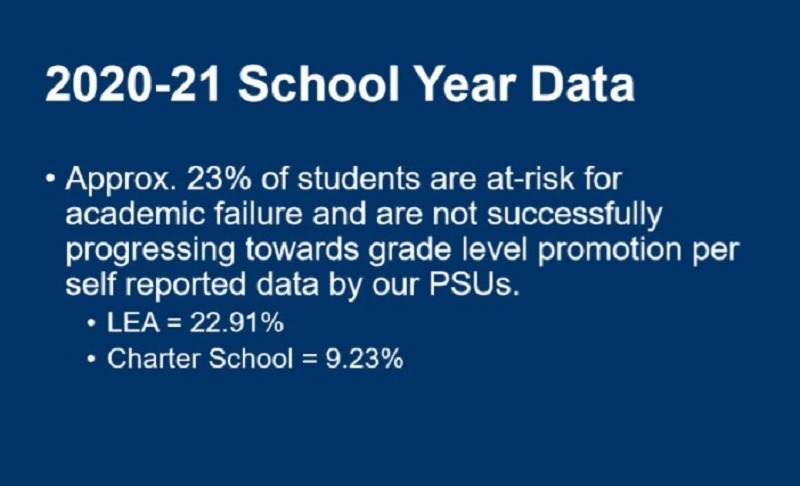
The final questions in the survey asked schools to anticipate end-of-the-year student data without the ability to know how interventions may play out.
The report results contain six tables, broken down to three each for public schools and charter schools
The first two tables reported the number of students who are at-risk for academic failure and are not successfully progressing toward grade-level promotion for the number of public and charter school students, respectively.
Statewide, for public schools overall, 311,076 out of 1,357,689 students (22.91%) are considered at-risk.
Highest percentage is in grade nine 32,904 out of 119,672 (27.50%), followed by seventh grade (25.81%), eighth grade (26.07%) and first grade (25.68%). The only grade to drop below 20% is high school seniors, grade 12 with 14,675 students at-risk out of 101,323 or 14.48%.
For charter schools overall, 11,607 (9.23%) out of 125,712 students were considered at-risk for academic failure. The highest rate was in grade nine, with 921 out of 7,340 students or 12.55%. That was followed by grade 3 (10.46%) and grade 8 (10.07%). The rest of the grades had percentages under 10%.
Tables three and four examined the number of public schools and charter schools anticipating a 10% or greater change in the number of students at-risk by the end of the 2020-2021 school year.
For public schools, 667 (44%) anticipate a 10% or greater change in the number of at-risk students by the end of the current school year. 854 schools did not expect a 10% or greater change. 50% of schools responding that they expect a 10% or greater change in seventh-graders which was followed by 49% for both sixth and eighth-graders. The grade with the lowest percentage for schools expecting a 10% or greater change is high school seniors, at 38%.
Overall, 253 (12%) charter schools reported they are anticipating a change of 10% or more, while 1,905 did not. For charter schools, the sixth grade had the highest percentage in this category with 29 schools (17%) anticipated an increase of 10% or more while 137 schools for grade six did not. The next closest was third grade, with 26 schools or 16%. Kindergarten and eighth grade tied at 14%.
Tables five and six dealt with the anticipated percentage change in the number of at-risk students by the end of the year from the pool of schools, public and charter respectively, who anticipated a significant change.
For public schools, 667 (44%) anticipating a 10% or greater change had -28.90% for the average percentage change of at-risk students. Charter schools anticipating a 10% or greater change totaled 253 (12%) with the average percentage change of at-risk students at -31.29%.
A link to a more detailed set of data by school as well as the original survey is accessible in the report.

